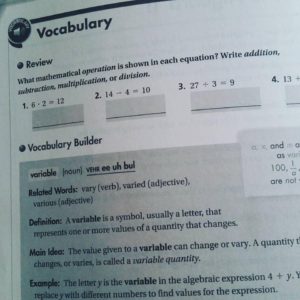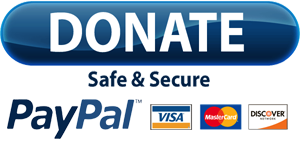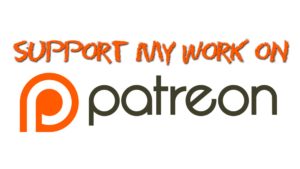Textbooks are Resources
NOT
Curricula
Teach like a good doctor practices medicine. Be prepared for a wide variety of issues, but always seek for the root of the problem so that your remedies may be most effective.
 One of the biggest hurdles in education, especially in High School, is getting those that wish to help to understand the nature of the problems faced in education today. The education industry has been down the path that has arrived at this stop for over a century. Those guiding the bus have landed us in the wrong part of town!
One of the biggest hurdles in education, especially in High School, is getting those that wish to help to understand the nature of the problems faced in education today. The education industry has been down the path that has arrived at this stop for over a century. Those guiding the bus have landed us in the wrong part of town!
And those guiding the bus wish to help get us out of this part of town, but they seem to misunderstand what got us here in the first place. It is the direction of their help that has landed us here. The majority of support and research and resource we find within education is just more of the same old stuff, because it has gotten off of the same bus. It’s not much good.
Consider the new wave of high school mathematics text books being published. There is a series called Big Ideas, which is highly ironic. The title of the book suggests it teaches the big ideas, the concepts. The authors claim that is the aim of the book. Each lesson and topic has a BIG IDEAS bullet and icon and yet, every single one of them is a procedure.
An example of this could involve graphing linear equations. Students can learn all about graphing linear equations, can even be highly proficient with this, without ever knowing what a graph is.
The Big Ideas book, which does not stand out as particularly horrible compared to its competition, will say something like:
Big Idea: To graph y = mx + b, plot the b term on the y-axis and then count the slope, m.
That’s not even an idea, much less a big one. That’s a protocol. If the problem looks like this, then do that. Ever have students see a problem like (3x + 5) – (2x – 5) and what they do is distribute, use FOIL? That’s because they’re accustomed to such protocol. The problem looks like (3x + 5)(2x – 5) and since they just learned how to multiply, that’s what should be done here.
The best American textbook we have found so far is by Pearson. It contains a few decent thinking strategies and some good “bell work” type activities. But it contains far more things like this:
Write addition, subtraction, multiplication or division, to describe the operation displayed below.
- 2 + 5 = 7 3 · 6 = 18 …
I kid you not! That is a high school level math book, supposedly.
I teach a non-American curriculum designed and tested through Cambridge University. Students that come through that program witness all of the things educators say they want to see happening with students. They are confident problem solvers who can think on their feet, make use of information, they latch onto more efficient methods than what they previously understood, and they have high levels of retention of materials (recall).
The books Cambridge University approves to be used for their curriculum are entirely different in nature than our books here in the US. They’re thin, don’t have silly eye-catching icons and are intended to be used as a resource. The books are not designed to go “cover to cover,” but instead can be used in any order desired. Math is connected in many different ways. Depending on how it’s unfolded one topic we consider “higher” can be taught first and then our supporting, foundational topics can be introduced later.
The point is, the curriculum is not the book. The books for Cambridge are written to support the curriculum. The book is a resource. Like resources, sometimes the more and the greater the variety, the better. That’s why some formats like YouTube are so powerful for students. There is a variety of techniques, styles, approaches and flavors all addressing the same thing on YouTube. Students can navigate their way through, seeking understanding, which of course leads to more questions, which when chased leads to more understanding, and the cycle starts over again.
Textbooks, no matter how fantastic, do not do this. I argue that no entity, be it a company, group or individual can offer such a service. (Yes, YouTube and others host means of expression and information sharing, but their intent is not to address one topic or genre.)
But textbook companies have marketed themselves as providing such services. There is a greater need for such a thing in Elementary Schools where teachers teach all subjects and topics. Having a resource that a teacher can use, cover to cover, that structures their day, weeks, and year, balancing all of the various tasks they must cover, is a huge boon, especially for inexperienced teachers.
In High School, the game is entirely different. Each subject is taught by an expert in that field (in an ideal world anyway). Such a tool is not only not needed, it is impossible to use.
If students are learning a topic in English, say some writing component, and they lack some foundational skill, a textbook will not identify and then address that. They try with remedial support materials, but they’re of the nature in the picture I shared earlier. And remediation of such a fashion, in isolation, not embedded in new content, is completely ineffective.
The majority of what happens in a good high school lesson is unscripted. Much of it will be anticipated and the teacher will be prepared for these things, but until the specific issues themselves crop up, the remedy is unknown.
It’s not unlike what a family doctor experiences. The doctor can anticipate what is going to happen in an interview with a patient, but until they see it unfold, they don’t really know what the best remedy is. But whatever the issue they either have a remedy or know where to turn. Unfortunately, doctors don’t always do a good job identifying problems, and like bad teaching, they have remedies in mind before understanding the issue at hand. The remedies, of course, fail, causing frustration while allowing those problems to fester.
Teaching high school math is similar to this. A good teacher will have some beliefs about why students are confused, or what they don’t know and do know, but they explore a little bit to verify their beliefs.
It is my firm belief, though this statement is pirated for Sir Arthur Conan Doyle, that a teacher that can be replaced by a computer should be.
The educational industry has been moving to compartmentalize and create modular components of education itself. That way, if one part of the system fails, that modular can be pulled out, and a replacement piece can be inserted.
But education is organic and to teach is to perform an act of charity. A textbook, no matter how well written, can do perform organically and cannot itself be charitable. A book, however, can be used as a resource, especially if the intentions of the authors is to create a resource.
The education industry does not want books to be a resource. Many good teachers have left, positions are filled with unqualified or inexperienced people. Those that are experienced and qualified are overwhelmed with the call to help support others.
If only we could fix all of that with a book that anybody could open and use, then our students would have a fighting chance.



